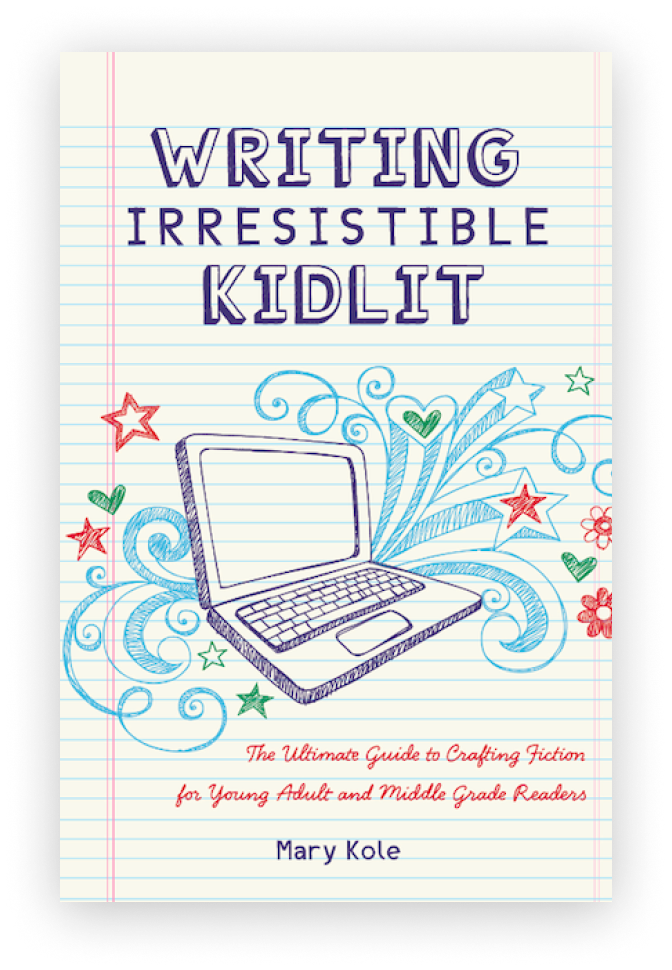Elements of Storytelling Structure
By Mary Kole
Mary Kole is a former literary agent, freelance editor, writing teacher, author of Writing Irresistible Kidlit, and IP developer for major publishers, with over a decade in the publishing industry.
Writing a novel or memoir is a thrilling and rewarding experience. However, it can also prove to be daunting and frustrating. One of the most significant challenges writers face is creating a compelling and engaging storytelling structure that captures the reader's attention from the first page to the last. A well-crafted storytelling structure is crucial to the success of your manuscript, especially in today’s competitive publishing industry. In this article, I’ll take you through everything you need to know about crafting an appealing storytelling structure for your novel or memoir.
What Is a Storytelling Structure?
Storytelling structure refers to the way in which you choose to deliver your story to the reader, either in a chronological narrative or another, more ambitious novel outline. A great storytelling structure can help to create tension, introduce relatable characters, and keep the reader engaged throughout the story. There are several storytelling structures that every writer should know, including the three-act structure and the hero's journey.
Ingredients of a Storytelling Structure
The key ingredients of a storytelling structure are the plot, the characters, and the setting. To craft an appealing storytelling structure, you need to create strong characters and a believable, immersive world, even if your story is set in our contemporary reality. Plot development is equally important, as it is what moves the story forward. A solid storytelling structure needs to include tension, conflict, and resolution to keep the reader engaged throughout the story.
A well-crafted plot outline is crucial to the success of your novel or memoir. Start by brainstorming your story idea and organizing its component parts into a coherent plot driven by cause and effect logic. You can then use this to create an outline that showcases the structure of your story. Your plot outline should include the main plot points, key characters and their development over time, subplots, and even possible chapters and scenes. Make sure your plot outline is clear and concise, and don't be afraid to make changes as your story develops. It should be a living document as you’re drafting and revising your storytelling structure.
Character and Action Beats Expected in a Storytelling Structure
Every storytelling structure has specific character beats and action beats that must be included to make it engaging. For instance, the three-act structure needs a clear inciting incident, rising action, a story climax, and a resolution, with additional attention paid to the midpoint development. A hero's journey, on the other hand, requires a distinct call to adventure, an initiation, an inner struggle, and a final transformation. Understanding the required beats for each storytelling structure can help in making your story more compelling. There are many storytelling structure options out there for you to dig into.
Common Mistakes Writers Make with their Storytelling Structure
Knowing the common mistakes writers make with their storytelling structure can help you avoid them. Often, writers may forget crucial plot points, making the story confusing or dull. Not everything that randomly happens to a protagonist is worthy of inclusion (this is especially true with a memoir project). Another common mistake is too much exposition or backstory, which can derail the pacing of the story. Make sure that you are thinking about a balance of action and information, with an eye toward moving the story forward quickly. Ensure you show, don’t tell, giving the readers a chance to connect with the world you create. Lastly, failing to develop the characters enough is a mistake—readers will care about your story depending on how attached they become to the characters.
In conclusion, crafting a compelling storytelling structure is vital to creating an engaging and successful novel or memoir. By understanding what a storytelling structure is, the ingredients of a storytelling structure, and how to execute a plot outline for maximum emotional impact, you are on the right path to writing a compelling story. Don't forget to include key character and action beats expected in storytelling structures while avoiding common mistakes. Bear in mind that each genre of novel is different in terms of expectations for storytelling structure. Keep the above points in mind, and you will be on your way to creating a captivating and memorable story that resonates with your readers.

Click here to purchase Writing Irresistible Kidlit, my book on fiction craft for MG and YA novels, out from Writer's Digest Books. This will show you my writing craft philosophy and give you lots of valuable advice, including tips for the novel revision process and self-editing. There are over 35 example novels cited and discussed throughout. It’s a valuable resource for any writer’s toolkit.
Click here to purchase Irresistible Query Letters, my book on query letters, including over forty examples with comprehensive notes on each one. There’s a ton of submission advice, best practices, and insider information in these pages, and you’ll really enjoy seeing what other writers are doing in the slush.
Click here to purchase Writing Interiority: Crafting Irresistible Characters, my book on interiority and character creation. Explore your protagonist’s thoughts, feelings, reactions and interpretations, expectations, and inner struggles to create a rich, immersive experience. This guide will empower you to create characters who live and breathe on the page, fostering an unbreakable bond with your audience.





